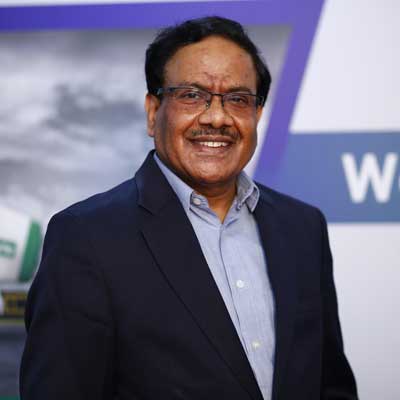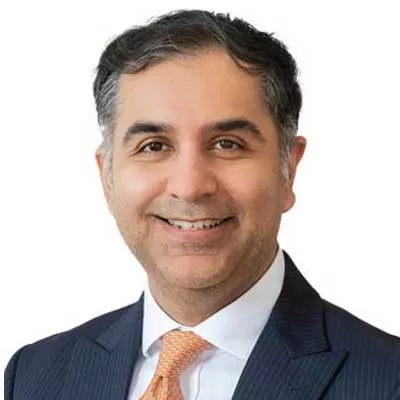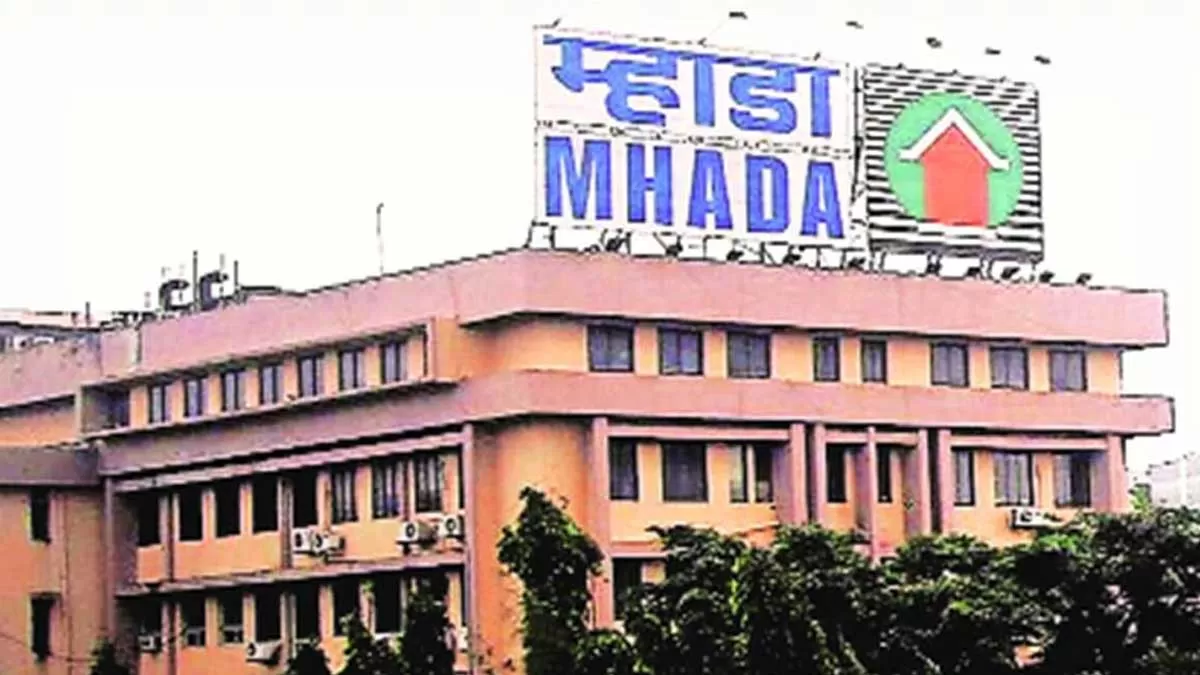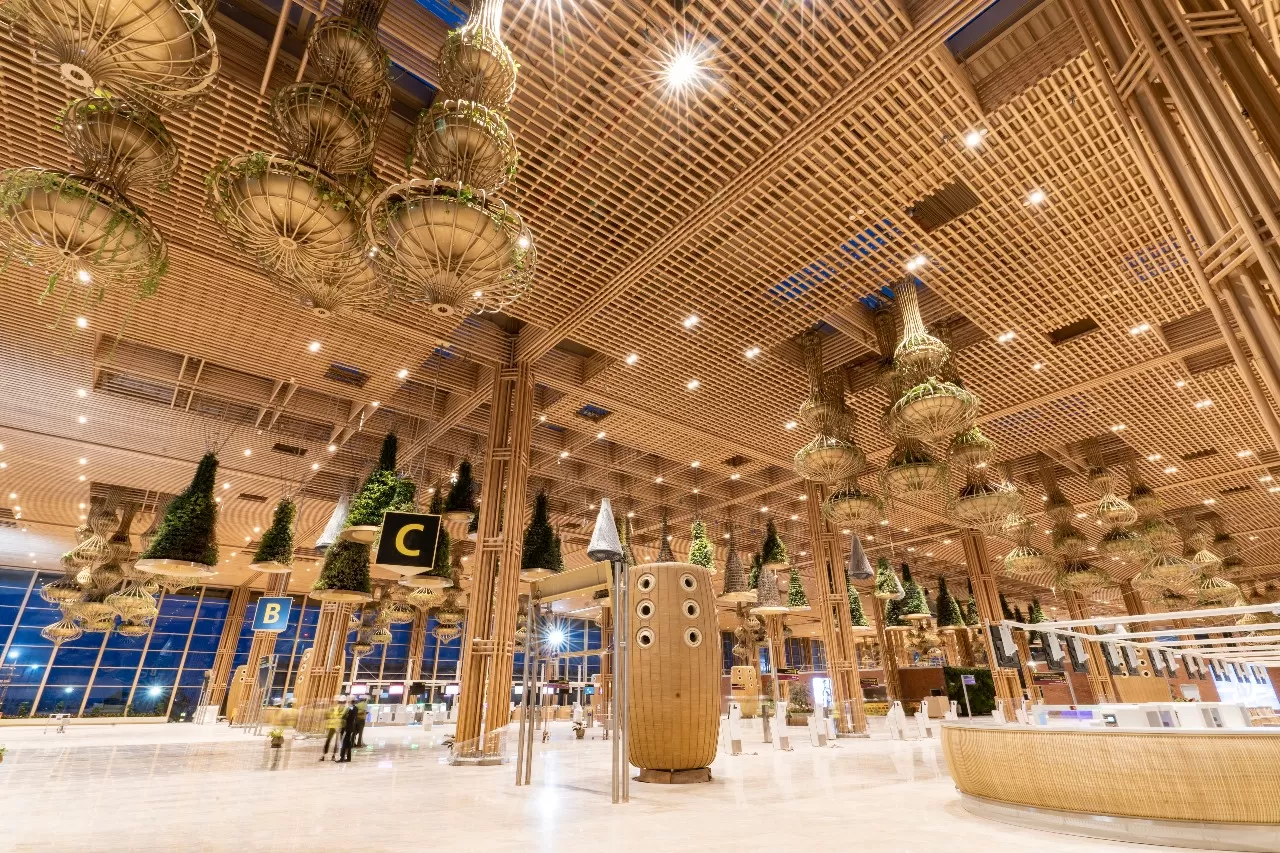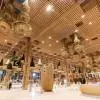Anil Banchhor, MD and CEO of RDC Concrete is a seasoned professional with the last ten years in a leadership position. He shares his view with the ICR team on various aspects of the ready-mix concrete business.
Can you briefly introduce RDC concrete to our readers? Please tell us about your pan India presence and capacity as of 31st March 2021.
RDC concrete is the pioneer of the commercial ready-mix concrete industry in India. The first commercial plant was established in 1993 in Mumbai as a JV between RDC of Singapore and UNITEC developers. The earlier name of the company was Unitech Prefab Ltd. In the year 2000, RDC Singapore took over 100% of equity and the name of the company changed to RDC Concrete India Pvt. Limited. At that time, RDC concrete of Singapore was also having a presence in several other countries like Malaysia, Vietnam, Indonesia, Hongkong, etc.
In the year 2005, Truenorth a PE fund (India value fund) took over RDC, but the name RDC concrete continued as the brand name was strongly associated with quality and service. In the portfolio of Truenorth PE fund, there are about 25 companies from various sectors like cement, aggregates, banking, home financing, technology, logistics, FMCG, pharma, services, etc. RDC concrete has 51 plants across India with a capacity of 25 lac m3 concrete per year.
The year 2020 was critical for every industry. To what extent your business got affected due to the pandemic? How was the recovery?
In our RMC industry, work from home is not possible as all actions happen at factories for production, deliveries, and pumping at the site. When the lockdown was imposed, we kept two batchers within the plant and their job was to keep the equipment in good condition and take dry runs at regular intervals so that we are fully prepared once the lockdown is lifted. We kept a check on the functioning of the plants through video calls. This way, we kept the powder dry and started firing on all cylinders, when lockdown ended.
We did a 20% lower volume in the last financial year as compared to FY 2020, but we were successful in exceeding the EBITDA of the previous year, despite Covid-19. Q1 was a complete washout after the lockdown was imposed after 23rd March. But we were the first to restart plants in Mumbai on 13th April and then all plants opened gradually. Q2 was like breakeven. Q3 and Q4 were really good, and we could produce 17.5 lac m3 concrete. Profitability wise we improved over previous year numbers due to reduction in fixed costs. Our truck hiring model was changed from fixed rental per month to variable model on a km run basis. Also, we were successful in reducing costs such as power, water, wastages, etc on the plant operations level.
What about cash flow?
Cash flow was a matter of concern and we increased focus on collections. Many clients were not paying dues, but we kept on paying our vendors because they have been associated with us for a long time. Slowly all customers started paying in parts, which we kept rotating back in our business.
As a leader how do you keep the morale of the employees high during the pandemic time?
Morale is infectious. If the morale of a leader is high, then the morale of the whole team remains high. The morale of all our business heads was high and this is in our culture. They just do not give instructions, but they lead from the front. When the concrete was required for a government project in Mumbai, our plants were started immediately. Our Mumbai Business head was present at the plant for the smooth delivery of concrete. I remember that this happened on 13th April in the Sakinaka area of Mumbai. This kind of leadership action boosted the morale of the team.
We made an Emergency Response Team called ERT consisting of two people from each city and two people from the head office. The job of ERT was to call every employee at regular intervals for improved communication and to check the well-being of their family members. They provided immediate assistance in case of any hospitalisation.
We also introduced daily health declarations by all employees, including family members, through google form about their health status like temperature, cough, oxygen level to quickly identify issues and to provide immediate support.
We purchased O2 concentrators for each location and kept them in readiness for any emergency requirements. Plants were sanitised regularly. We followed all protocols related to wearing a mask, hand washing, and social distancing. We had taken the Apollo home care package and all employees with families were covered in it. Apollo doctors were calling the patients two times a day through web calls and checking all vital parameters. Medicines, oximeters, thermometers were delivered to their homes regularly. Regular video calls by psychologists and dieticians were arranged for them. As a result, the number of people infected in our company was very low.
We have also given 14 days special leave provision for those who got infected from Corona, apart from 42 days of Earned leave. To my knowledge, no other company from our industry has given such additional leave provision. We did not sack any staff during Covid-19, and no salary deduction was done. We enhanced the life insurance coverage at the beginning of the first Covid impact. At the lower level pay scale, it worked out to be 10 years of CTC and that is quite impactful.
Tell us about your preparedness for the 2nd wave or maybe the subsequent third wave?
Everything was looking good in December-January, and then suddenly the second wave hit India, which was more infectious. Since many SOPs were in place during the first wave of Covid, we simply rolled it out again. We were ready but were only constrained by the government's orders. Otherwise, our people are geared to work in any wave now. Our Emergency response Team “ERT” swung into action and started enquiring with all staff members to check their well-being and assist, if needed. Our group company Truenoth is having about 25 companies and a network of all HR heads who started regular web meetings for supporting each other. We continued with the Apollo home package.
We also made a list of plasma donors within the company and shared it with other sister companies for any urgent requirements. Additional Covid leave of 14 days is already in place. This was our preparedness for the second wave.
What is the current situation? How many of your plants are functional?
Kerala is fully locked down and no plant is running there. Gurgaon is fully closed too. Few of the cities are having a weekend lockdown and we cannot operate on weekends. Our volume has come down to 40-50 percent of the normal.
Many companies increased their technology penetration during Covid. How has RDC leveraged technology to enhance efficiency and effectiveness?
We already have good technology penetration in RDC. All our plants are online including all incoming material systems and outgoing supplies. Further enhancement was made on the technology during the Covid period, and we were able to reduce the paper consumption significantly.
Earlier, all incoming trucks with raw materials were coming with paper challans and we converted them to e challan with QR code. Hence all points of contact were eliminated, and this helped us in reducing the spread of infection. This led to a drastic reduction in paper consumption. All outgoing delivery challans were converted to e challan for all customers except a few who still wanted paper challans compulsorily. In our industry, people are not very tech-savvy, and many customers still want everything in hard copies. Whereas we do not want any hard copy from any of our vendors.
Our IT penetration has reached all employees. Training is online, the production system is online, logistics is online, all documents are on the server. All employee claim forms and documents were converted to a digital platform including all approvals. Papers have been dispensed with and everything moves electronically by DMS. Another major technology penetration is an e-learning tool called E Diksha. We took advantage of the available time and opportunity to train all staff in plant operations, logistics, quality controls, materials management, and general management programmes through web training.
We also developed interesting business simulation games, which were done completely in-house. These simulation games are for all business managers to sharpen their decision-making skills in a real-life situation. We are the only company in our industry to have such business simulation games. We run business games for three to four quarters and results are declared after every quarter. Feedback is also given, after every quarter, as to what went well and what needs improvement. This has helped significantly in improving leadership skills.
On the technology front, we developed a manless weighbridge based on QR code and RFID. All weighbridges are fitted with 3 cameras and two RFID readers. The supplier gets material receipt notification with a pdf copy by mail along with 6 photographs.
We introduced Petro cards issued by oil companies and gave them to transporters. As soon as the diesel is dispensed from petrol pumps through petro card, automatic GRN entry reflects in our ERP. In the plant, we also developed an automated diesel dispensing system with ERP integration. Whatever diesel is drawn, the automatic diesel issue gets recorded in ERP.
All HR-related items have been shifted to zing HR, like KPI, performance review, compensation, leave approvals, Salary slips, form 16, Mediclaim, etc. Silo stock measurement has also been developed with automation and is being implemented after a successful pilot in 3-4 plants.
Do you think it is a fallout of the Covid wave or otherwise also you would have persuaded the same this time?
Due to Covid-19, we could get time since all the plants were closed and we could spend some energy on it. The other reason is we always wanted to go paperless. Paper is one cause for spreading infections. We are moving towards paperless RDC.
How do you foresee business in the year 2021-22? Especially taking into account the spread of the 2nd wave of coronavirus and maybe 3rd a little later?
In April, volumes were down by 20%. In May, the business came down by 40% of the normal months. It seems that this will continue in June also. I expect things will start moving upward from July before it reaches normalcy in October. By this time, more vaccinations will happen and infrastructure in hospitals would also improve to a great extent to tackle the 3rd wave. We have tied up with Apollo hospitals for the vaccination of all our staff and their family members. Preparedness of all agencies would be better during the 3rd wave in all cities, and I feel that the impact would be much lower. I am confident that all businesses will bounce back after November, and we will do better than last year.
Give us some idea about the safety aspects of your operations? How do you engage employees in making safety a matter of daily routine? How coronavirus impacted the safety at your plants and offices?
In RDC Concrete, safety is taken as a priority item. Safety Toolbox talk meetings are happening at plants on a daily and weekly basis. Compliance on safety initiatives, hazard identification, and rectification are reviewed on a weekly and monthly basis. We keep on improving safety through various new safety initiatives. We also ensure that the best practice of one plant is replicated in other plants quickly.
KPI of all employees is having 20% weightage on safety. Even the staff at the head office must go to the plant every quarter to complete a safety audit of the plant. We have a quarterly interplant competition on Safety and productivity called “sartaj” and safety has 38% weightage in the competition. The winning plant is awarded with a rolling trophy with one lac cash award for staff engagement with certificates for all plant staff. Runner up plant gets Rs 50,000 for party or people engagement activities. RDC concrete is the only RMC company which is having such interplant completion on safety and productivity.
The safety officer visits each plant in a year and conducts audits. During this pandemic, video audits are being done. Apart from this, we have internal and external statutory auditors, and they also check safety compliance in the plant and bring out issues if there are any. Safety related to Coronavirus is the most important aspect now. The well-being of employees is the foremost priority at present and not the business. If employees are taken care of, the business will bounce back later. We are taking all precautions for the protection of staff and their family members during this challenging time.
We have tied up with Apollo for vaccination of all staff including their family members. We made vaccination compulsory for each staff member. About 95% of staff including their family members are already vaccinated as of the date.
How do you manage the shortage of sand in making concrete?
River sand is being used mostly in the north and eastern part of India, otherwise in most of the states use of river sand for concrete making is banned. All grades of concrete including high grades up to M120 and high-performance concrete are being produced with crushed sand or manufactured sand. Even concrete structures in coastal zones which are exposed to the extreme weather conditions and durability is foremost important, are being made with crushed sand. In fact, we should not be using river sand at all. Customer acceptance in some locations is a challenge and not the availability of river sand. Slowly all locations are seeing improved customer acceptability.
Normally the river sand is rounded whereas crushed has angular particles which give a kind of harshness to concrete. How is this problem addressed?
With proper proportioning of the ingredients like 10 mm, 20 mm, sand, and the finer material fly ash and cement together should give a cohesive mix of concrete. Let us not forget about the admixtures. Today we get good and consistent quality of admixtures, which helps in producing self-compacting concrete even with crushed sand, which can be used for very thin sections and is easily pourable. All this put together takes care of the angularity of manufactured sand. The manufactured sand produced using a vertical shaft impact (VSI) crusher is much better in shape and angularity. While sourcing the material we make sure that the supplier uses a VSI crusher.
What are the disadvantages of being a non-cement player in concrete business? Advantages
I agree that being a non-cement RMC player is a challenge but there are opportunities also, which makes us more efficient, more productive, and agile, leading to better service to the customers. Let me admit that the cement and concrete together are a very good combination. However, it does not mean that a non-cement player cannot work. In fact, he can turn it into an opportunity to be a more efficient player, which we are. In fact, all cement players must have concrete as a channel. We had seen in practical terms that in combination, cement EBITDA gets doubled or more than double, if the cement company is having RMC as a channel.
In the last few years, there has been a boom in the RMC industry and the cement consumption through the RMC route is increasing every day. RMC penetration in tier 2 and tier 3 cities are increasing. Headache of manual mixing is a challenge due to the shortage of workers and wastages. Architects are also recommending the use of RMC for better quality and durability of the concrete structure.
Which are the highest-selling grades of concrete for metro work and for real estate? What are the challenges associated with supplying these grades?
For metro jobs, generally, M40 and M30 grades are being used. For the precast segment higher grades like M50 are also being used for early stripping of formwork. In commercial or residential projects, general grades are M40 and M30. For columns, M60 is being used. For high-rise skyscraper projects, we have supplied even M95 grades also in Mumbai and other metro cities.
Quality control on raw materials and the skill set of people are very important for high grades and there is no challenge for us in this regard as our in-house team is quite competent and motivated. We have done many metro captive jobs in many cities and at present, five metro captive jobs are running in different cities. We are also supplying a lot of concrete from commercial plants as well to metro projects. Managing transit mixer truck movement is the only challenge during peak traffic in cities.
What do you see 5 years, 10 years down the line about the ready mixed concrete business? What kind of sophistication do you think can come in?
The RMC industry will keep growing at about 18-20% CAGR and more and more cement will move through the ready-mix concrete route. Trade sales will keep on coming down over a period. Because of increased RMC penetration, more cement needs to be delivered in bulk. Cement companies need to create bulk terminals near cities for quicker delivery. Such cement companies would be at an advantage. More penetration will come in tier 2 and 3 cities as the high-rise building construction will increase in such cities apart from metros. Individual house constructions are getting reduced. Builders and developers are launching new projects in tier 2, 3 cities. A lot of commercial complexes, malls are being built. All these constructions are using batching plants with bulk supplies.
At present, there are about 2500 commercial RMC plants and about 7000 captive plants of contractors and construction companies. This number will keep on growing and within the next 8-10 years, this number is expected to double. Automation will increase in RMC and more mechanized construction will take place leading to higher productivity per person.
Many cities are having a lot of traffic restrictions for truck movement. So, the time available to service to customers is getting reduced. This will lead to a higher capacity of plants and a higher capacity of transit mixers. At present we use trucks with a capacity of 6-7 cubic meters of concrete that will go to 8-10 cubic meters of concrete. More and more use of concrete pumps will take place. Hence bigger size plants are required in outskirts of the city.
About Anil Banchhor: Presently Managing Director and CEO of RDC Concrete. He is a professionally qualified civil engineer. Initially, started from construction and then moved to cement marketing and to ready mixed business. He was associated with ACC, rose to the position of CEO- RMX, and then moved on to RDC concrete.
